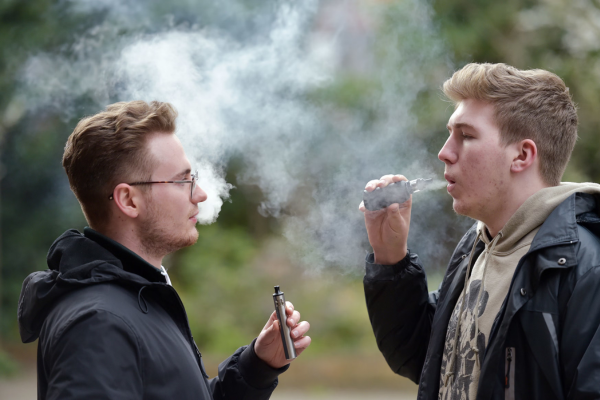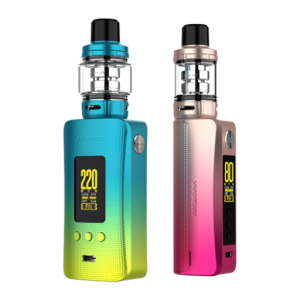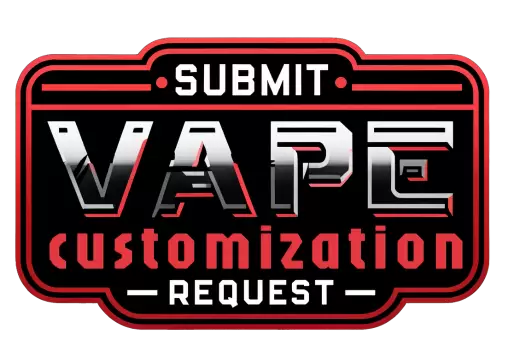The global landscape surrounding disposable vapes is marked by a striking divergence in regulations, reflecting a broad spectrum of attitudes towards vaping. From countries embracing these products as tools for smoking cessation to others imposing strict bans to protect public health, the international approach to disposable vapes is anything but uniform. This variance poses significant challenges for users, manufacturers, and policymakers alike, as they navigate a complex web of legal frameworks that influence the accessibility and use of disposable vapes.
At the heart of the debate are key factors such as health concerns, particularly regarding long-term impacts; the goal of preventing youth access to nicotine products; and differing views on the appropriateness of vaping in public spaces. These considerations have led to a wide range of regulatory responses, from comprehensive flavor bans aimed at reducing the appeal of disposable vapes to minors, to innovative prescription models intended to balance public health benefits with control measures.
This introduction sets the stage for an exploration of international disposable vape regulations. By delving into the specifics of how various countries and regions address the challenges and opportunities presented by disposable vapes, we aim to provide a clear picture of the global regulatory environment. Understanding these differences is crucial for users who travel, businesses operating in multiple markets, and anyone interested in the ongoing discourse surrounding vaping and public health.

Understanding Disposable Vape Regulations: A Primer
Disposable vapes have emerged as a significant segment within the broader vaping market, appealing to users with their convenience and wide range of flavors. As these products continue to gain popularity, understanding the regulatory landscape governing their sale and use becomes increasingly important. This primer aims to shed light on the definition of disposable vapes, the key factors influencing their regulation, and the impact on both users and the industry.
Definition of Disposable Vapes and Their Market Segment
Disposable vapes are non-rechargeable, pre-filled vaping devices designed for single use. Once the e-liquid is depleted or the battery runs out, the entire unit is disposed of. This convenience and ease of use have positioned disposable vapes as an attractive option for adult smokers looking to switch from traditional cigarettes, as well as for new users.
Key Factors Influencing Regulations
- Health Concerns: The primary driver behind the regulation of disposable vapes is the concern for public health, particularly the potential risks associated with long-term vaping. Governments and health organizations seek to understand and mitigate any adverse health effects, leading to strict product standards and quality controls.
- Youth Access: Preventing minors from accessing nicotine products is a universal goal. Disposable vapes, often available in flavors appealing to a younger demographic, have prompted regulators to impose age restrictions and marketing limitations to deter youth interest and usage.
- Public Usage: The appropriateness of using disposable vapes in public venues, such as restaurants, bars, and open spaces, varies by jurisdiction. Concerns about secondhand exposure and the normalization of vaping behaviors have led to regulations that often parallel those for traditional smoking.
The Impact of Regulations on Users and the Industry
For users, navigating the patchwork of regulations affecting disposable vapes means staying informed about local laws, especially when traveling. Restrictions on flavors, nicotine strengths, and where these products can be used directly influence user experience and access.
For the vaping industry, compliance with diverse and evolving regulations presents both challenges and opportunities. Manufacturers and retailers must adapt to legal standards that vary significantly across borders, affecting product development, marketing strategies, and distribution networks.
Understanding the regulatory framework for disposable vapes is crucial for both users and the industry. As the global conversation around vaping continues to evolve, staying informed about these regulations ensures responsible use and compliance, fostering a safer and more sustainable vaping landscape.
United States: State-Specific Regulations Within a Federal Framework
In the United States, the regulation of disposable vapes navigates through a layered landscape of federal oversight and state-specific laws, creating a diverse regulatory environment that reflects the country’s varied public health priorities and cultural attitudes towards vaping.
Overview of FDA’s Stance on Disposable Vapes and Flavor Bans
The Food and Drug Administration (FDA) plays a pivotal role at the federal level in regulating disposable vapes. Key points include:
- Age Restrictions: The FDA enforces a national minimum age of 21 for purchasing disposable vapes, aiming to limit access among teenagers and young adults.
- Flavor Bans: In response to concerns over youth vaping, the FDA has scrutinized flavored disposable vapes. While initially focusing on cartridge-based e-cigarettes, the regulatory scope has broadened to include disposables, with particular attention to flavors that might appeal to minors.
- Pre-market Authorization: Manufacturers of disposable vapes are required to submit their products for FDA review before marketing, ensuring compliance with public health standards.
Highlighting States with Notable Restrictions or Allowances
The regulatory approach to disposable vapes further diverges at the state level, where legislatures have enacted laws reflecting local values and concerns:
- California: Known for its progressive public health policies, California has implemented stringent restrictions on the sale of flavored disposable vapes to curb youth vaping.
- Michigan: As one of the first states to announce a ban on flavored vaping products, Michigan’s stance highlights the growing trend of states taking decisive action against youth-targeted vaping products.
- New York: Similar to California, New York has enforced a comprehensive flavor ban, significantly impacting the availability of flavored disposable vapes within the state.
Navigating State and Federal Regulations
For users and businesses involved with disposable vapes, understanding the nuances of both federal and state regulations is crucial:
- Stay Informed: Keeping abreast of the latest regulatory developments at both levels is essential for compliance and informed decision-making.
- Compliance is Key: Adhering to the strictest regulations in any given area ensures that businesses can operate without legal repercussions, and users can enjoy disposable vapes within the bounds of the law.
- Engage with Advocacy: The dynamic regulatory environment presents an opportunity for stakeholders to engage in advocacy efforts, influencing future policies to reflect a balanced approach to harm reduction and public health.
The United States exemplifies the complex interplay between federal intentions and state autonomy in regulating disposable vapes. This patchwork of regulations requires diligence from users and industry players alike to navigate effectively, underscoring the importance of staying informed and engaged in the evolving landscape of vape legislation.

United Kingdom: A Balanced Approach with Emphasis on Smoking Cessation
The United Kingdom has adopted a notably balanced and progressive stance towards disposable vapes, emphasizing their role in smoking cessation while implementing regulations to ensure public health and safety. This approach is informed by substantial evidence suggesting that vaping can serve as an effective tool for reducing smoking rates among adults, without unduly increasing youth uptake of nicotine products.
How the UK Regulates Disposable Vapes Under the TPD Guidelines
The UK’s regulation of disposable vapes is largely governed by the EU’s Tobacco Products Directive (TPD), despite Brexit. The TPD provides a comprehensive set of standards aimed at ensuring the safety and quality of vaping products, including:
- Maximum Nicotine Strength: Capped at 20 mg/mL to prevent excessive nicotine intake.
- Tank Size and E-liquid Volume: Restrictions on the size of disposable vapes and the amount of e-liquid they can contain to limit exposure.
- Packaging and Labeling: Mandates include health warnings and child-resistant packaging to enhance safety and inform consumers.
The Role of Disposable Vapes in Harm Reduction Strategies
Public Health England (PHE) has been a vocal advocate for the potential of vaping as a less harmful alternative to smoking traditional tobacco products. This position is supported by research, including PHE’s famous declaration that vaping is approximately 95% less harmful than smoking. Disposable vapes, with their convenience and accessibility, play into this harm reduction strategy by offering smokers a viable and less risky option to aid in their quitting journey.
Navigating Vaping Laws in the UK
For individuals and businesses engaging with disposable vapes in the UK, several key points should be considered:
- Adherence to Regulations: Ensuring compliance with TPD guidelines is crucial for businesses, while users should remain aware of the legal contexts governing purchase and use.
- Public Usage: While the UK doesn’t broadly restrict vaping in public spaces, local regulations and venue policies may vary, necessitating a respectful and informed approach to public vaping.
- Youth Protection: Despite the UK’s relatively open stance on vaping, protecting minors remains a priority. Age verification and adherence to marketing restrictions are critical aspects of compliance.
The UK’s approach to disposable vapes highlights a pragmatic and evidence-based strategy towards vaping regulation, emphasizing public health benefits while maintaining safeguards to protect the community, especially youth, from potential risks. This balanced perspective fosters an environment where smokers can access safer alternatives, contributing to the overarching goal of reducing smoking prevalence in the country.

European Union: Harmonized Yet Heterogeneous Regulations
The European Union (EU) presents a unique regulatory landscape for disposable vapes, characterized by a harmonized framework that allows for member state-specific nuances. The Tobacco Products Directive (TPD), adopted across EU countries, sets out unified standards for the manufacture, presentation, and sale of vaping products, including disposable vapes. However, within this overarching framework, individual countries have the flexibility to implement more stringent measures based on national public health priorities and cultural attitudes toward vaping.
Examination of the EU’s TPD and Its Implementation Across Member States
The TPD aims to safeguard public health across the EU by imposing a set of comprehensive regulations on vaping products:
- Nicotine Strength and Volume Limits: The directive caps nicotine concentration at 20 mg/mL and restricts the volume of e-liquid in disposable vapes to 10 mL, aiming to reduce the risk of excessive nicotine consumption.
- Health Warnings and Packaging: Mandatory health warnings cover 30% of the packaging, and all disposable vapes must be child-resistant and tamper-evident, enhancing consumer safety.
- Ingredient Disclosure: Manufacturers are required to disclose all ingredients in disposable vapes, allowing for regulatory oversight and consumer informed choice.
Country-specific Case Studies Showcasing the Range of Regulatory Environments
Despite the TPD’s unifying intent, the degree of regulatory stringency varies significantly across the EU:
- Germany: Focuses on strict enforcement of age verification to prevent youth access, while allowing a relatively wide array of flavored disposable vapes within the TPD guidelines.
- France: Has implemented additional restrictions on advertising and promotion of vaping products, including disposable vapes, to minimize their visibility to minors.
- Italy: Recently introduced a “sin tax” on vaping products, significantly increasing the cost of disposable vapes, with the dual aim of reducing vaping’s appeal to younger demographics and generating revenue.
Navigating Vaping Laws in the European Union
For individuals and businesses involved with disposable vapes in the EU, understanding and navigating the regulatory landscape requires attention to both the harmonized framework and country-specific regulations:
- Stay Informed: Keeping abreast of both TPD requirements and national laws is essential for compliance and informed decision-making.
- Adapt to Local Regulations: Businesses must tailor their product offerings and marketing strategies to align with the specific regulations of each EU country in which they operate.
- Engage with Regulatory Bodies: Active engagement with both EU-wide and national regulatory bodies can provide valuable insights into upcoming regulatory changes and influence policy development.
The EU’s approach to regulating disposable vapes through the TPD, supplemented by member state-specific regulations, reflects a commitment to public health while acknowledging the diverse cultural and social landscapes across Europe. Navigating this complex regulatory environment requires diligence, flexibility, and a proactive stance toward compliance and engagement.
Canada: Federal Oversight with Provincial Nuances
Canada’s approach to regulating disposable vapes showcases a blend of federal oversight and provincial nuances, creating a comprehensive yet varied landscape across the country. This dual-layered regulatory framework aims to protect public health, particularly among youth, while accommodating the potential harm reduction benefits of vaping for adult smokers.
Federal Regulations Affecting Disposable Vapes
At the federal level, Health Canada oversees the regulation of vaping products, including disposable vapes, under the Tobacco and Vaping Products Act (TVPA). Key aspects of this legislation include:
- Nicotine Content and Packaging: The TVPA imposes restrictions on nicotine content, caps the amount of nicotine at 20 mg/mL, similar to the EU’s TPD, and mandates child-resistant packaging to enhance safety.
- Marketing Restrictions: To curb the appeal of disposable vapes to minors, Canada has implemented stringent marketing restrictions, prohibiting most forms of advertising that could reach young people.
Provincial Variations Affecting Accessibility and Usage
Beyond federal regulations, individual provinces and territories in Canada have the authority to enact additional laws governing the sale and use of disposable vapes, leading to a patchwork of regulations that reflect local public health priorities:
- British Columbia: Has introduced additional taxes on vaping products, including disposable vapes, and set limits on nicotine content to further deter youth vaping.
- Ontario: Enforces strict regulations on where vaping products can be displayed and sold in retail settings, aiming to reduce visibility and accessibility to minors.
- Quebec: Prohibits the sale of flavored disposable vapes in most retail locations, allowing them only in specialized vape shops accessible to adults.
Navigating Vaping Laws in Canada
For those involved with disposable vapes in Canada, navigating the regulatory environment requires an understanding of both federal and provincial laws:
- Stay Informed: Regularly update your knowledge of the evolving regulations at both levels, as provinces may introduce new measures or adjust existing ones in response to public health data.
- Compliance is Key: Ensure that products meet the strictest regulations applicable, whether federal or provincial, to avoid penalties and support public health objectives.
- Engage with Communities: Understanding local attitudes and concerns about vaping can help businesses and users navigate the social landscape, promoting responsible use and contributing to community health.
Canada’s regulatory framework for disposable vapes illustrates the country’s balanced approach to vaping, recognizing its potential for harm reduction while actively working to mitigate risks, especially for young Canadians. By adhering to this framework, users and businesses can contribute to a responsible vaping culture that aligns with Canada’s public health goals.
Australia: Strict Regulation with a Prescription Model
Australia’s regulatory approach to disposable vapes, particularly those containing nicotine, stands out for its strictness and unique prescription model. This framework reflects Australia’s commitment to public health, aiming to curb nicotine addiction rates while allowing smokers to access vaping products for cessation purposes under medical supervision.
Australia’s Unique Prescription-Based Model for Nicotine Disposable Vapes
In Australia, nicotine disposable vapes are classified as therapeutic goods, and their sale, possession, and use are regulated under the Therapeutic Goods Administration (TGA). Key aspects of this approach include:
- Prescription Requirement: Individuals seeking to use nicotine-containing disposable vapes must obtain a prescription from a licensed Australian healthcare provider. This measure is intended to ensure that nicotine vaping products are used primarily for smoking cessation, under appropriate medical guidance.
- Controlled Importation: With a valid prescription, Australians can legally import nicotine disposable vapes for personal use through the TGA’s Personal Importation Scheme, subject to specific quantity limits and conditions.
State-level Variations and Enforcement Practices
Beyond the federal prescription model, Australian states and territories may impose additional regulations on the sale and use of disposable vapes:
- Retail Restrictions: The sale of non-nicotine disposable vapes is subject to state and territory laws, with some jurisdictions imposing restrictions or bans to align with the federal stance on nicotine products.
- Usage Regulations: Public usage of disposable vapes may be regulated at the state or territory level, with some areas restricting vaping in public spaces similar to smoking.
Navigating Vaping Laws in Australia
For individuals and businesses navigating the vaping landscape in Australia, several considerations are crucial:
- Obtain Necessary Prescriptions: For those using nicotine disposable vapes for cessation, securing a prescription is a legal requirement. Engaging with healthcare providers knowledgeable about vaping and cessation can facilitate this process.
- Understand Importation Rules: Familiarize yourself with the TGA’s guidelines for importing nicotine disposable vapes to ensure compliance with federal regulations.
- Stay Informed on State Laws: Given the variability in state and territory regulations, staying updated on local laws is essential for compliant use and sale of disposable vapes.
Australia’s regulatory approach, characterized by its prescription model and strict controls, highlights the country’s cautious stance on vaping. By adhering to these regulations, Australians can navigate the legal and public health landscape of disposable vapes, ensuring responsible and medically supervised use.

Asia: A Spectrum from Open Markets to Complete Bans
In Asia, the regulatory landscape for disposable vapes spans a broad spectrum, from open markets with minimal restrictions to complete bans. This diversity reflects the varied cultural, social, and public health priorities across the continent. Two countries that exemplify the range of approaches in Asia are Japan and Thailand, offering contrasting case studies in how disposable vapes are regulated.
Japan: Regulated Acceptance with Focus on Non-Nicotine Products
Japan presents a more accepting stance towards disposable vapes, particularly those without nicotine, which are more freely available due to the country’s unique regulatory environment:
- Nicotine Regulation: In Japan, nicotine-containing disposable vapes are subject to pharmaceutical regulations, making them less accessible than their non-nicotine counterparts.
- Market for Heat-not-Burn Products: Japan has seen significant growth in the market for heat-not-burn tobacco products, which has influenced the regulatory and public perception landscape for nicotine delivery devices, including disposable vapes.
- Public Usage: While there are restrictions on where vaping can be done, especially in public spaces, Japan’s approach is generally more permissive compared to other Asian countries.
Thailand: Stringent Bans and Enforcement
Conversely, Thailand adopts a stringent approach, with a complete ban on the sale, import, and possession of disposable vapes:
- Legal Implications: The ban in Thailand is comprehensive, covering all aspects of disposable vapes, including both nicotine and non-nicotine products. Violations of the ban can lead to severe penalties, including fines and imprisonment.
- Enforcement: Thai authorities actively enforce the ban, with customs officials vigilant about intercepting disposable vapes at points of entry. Travelers are particularly advised against bringing vaping products into the country.
Navigating Vaping Laws in Asia
For individuals traveling to or residing in Asia, understanding the diverse regulatory environment is crucial:
- Research Local Regulations: Before traveling, it’s essential to research the specific vaping laws of the destination country. Asia’s vast regulatory spectrum means that assumptions based on one country’s laws may not apply to another.
- Compliance is Key: Adhering to local laws is not only a matter of legal compliance but also respects for the host country’s cultural and public health policies.
- Stay Informed: Regulations can change, and staying informed through reliable sources is crucial for anyone looking to use or distribute disposable vapes in Asia.
Asia’s approach to disposable vapes underscores the importance of cultural, legal, and public health considerations in shaping vaping policies. By navigating these regulations with care and respect, individuals can ensure a responsible and compliant vaping experience across the continent.
Middle East and Africa: Cultural and Legal Factors Affecting Availability
The Middle East and Africa present a complex tapestry of cultural and legal responses to disposable vapes, with regulations heavily influenced by cultural norms, religious beliefs, and public health considerations. In many countries across these regions, strict laws reflect a cautious approach to vaping, often resulting in outright bans or severe restrictions.
Middle East: Predominantly Strict Regulations
In the Middle East, cultural and religious factors play a significant role in shaping vaping regulations:
- Outright Bans: Several countries, including the United Arab Emirates (UAE) and Saudi Arabia, have historically imposed strict bans on the sale, import, and use of disposable vapes. However, recent years have seen some shifts, with the UAE relaxing its stance to allow the sale of regulated vaping products under specific conditions.
- Public Perception: Vaping is often viewed through the lens of general tobacco control efforts, with a strong emphasis on preventing youth access and minimizing public health risks.
Africa: Diverse Approaches with Emerging Regulations
Africa’s approach to disposable vapes varies widely, reflecting the diversity of the continent:
- Emerging Markets: In some African countries, the vaping market is still in its infancy, leading to a lack of specific regulations for disposable vapes. This can result in a legal gray area, where the availability and use of vaping products are subject to change as regulations evolve.
- Health Concerns: Where regulations exist, they often prioritize public health concerns, similar to global trends, aiming to strike a balance between allowing adult smokers access to alternative nicotine delivery systems and protecting the broader population.
Navigating Vaping Laws in the Middle East and Africa
For those looking to understand the legal landscape for disposable vapes in the Middle East and Africa, several strategies are key:
- Research and Respect Local Laws: Given the stringent regulations in many countries, thorough research before traveling or attempting to purchase disposable vapes is essential. Respecting these laws is crucial to avoid legal penalties.
- Cultural Sensitivity: Awareness of and sensitivity to local cultural and religious norms can guide appropriate behavior regarding vaping in public spaces.
- Stay Informed of Changes: The regulatory environment for disposable vapes in these regions is dynamic. Staying informed about legal changes through reputable sources is necessary for compliance and respectful engagement.
The regulatory stance on disposable vapes in the Middle East and Africa underscores the influence of cultural, legal, and public health factors. By navigating these considerations with care, individuals and businesses can engage with the vaping market in a manner that respects local norms and complies with legal frameworks.

Vaping in Public Spaces: International Perspectives
The regulation of vaping, particularly the use of disposable vapes in public spaces, varies significantly around the world, reflecting diverse cultural attitudes, public health priorities, and legal frameworks. As countries strive to balance the rights of vapers with the welfare of the general public, a range of policies has emerged, from designated vaping areas to outright bans in certain locations.
How Different Countries Regulate the Use of Disposable Vapes in Public Venues
- Designated Vaping Areas: Some countries and regions have adopted policies that allow vaping in designated areas, similar to smoking sections. These spaces are typically outdoors or in well-ventilated areas, aiming to minimize exposure to bystanders.
- Outright Bans in Certain Locations: Other jurisdictions have implemented more stringent restrictions, treating disposable vapes similarly to traditional cigarettes. This includes bans on vaping in indoor public spaces, near schools, and in children’s parks, reflecting concerns about secondhand exposure and the normalization of vaping.
- Varied Regulations in Hospitality Venues: Bars, restaurants, and other hospitality venues often have their own policies regarding vaping, influenced by local laws and owner discretion. While some establishments may permit vaping, especially in outdoor seating areas, others may prohibit it entirely to accommodate all patrons comfortably.
The Trend Towards Designated Vaping Areas and Outright Bans
The global trend indicates a move towards more regulated use of disposable vapes in public spaces, with an increasing number of countries and localities establishing clear guidelines for where vaping is permitted. This trend is driven by:
- Public Health Research: Emerging studies on the potential health impacts of secondhand vapor exposure have prompted lawmakers to adopt precautionary measures.
- Public Opinion: Attitudes towards vaping in public spaces often reflect broader societal views on smoking and public health, influencing regulatory decisions.
Navigating Vaping Laws in Public Spaces: Tips for International Vapers
- Research Local Regulations: Before vaping in public, it’s crucial to research the specific laws and guidelines of your location. Understanding local regulations can help avoid unintentional violations.
- Respect Non-Vapers: Even in areas where vaping is allowed, being mindful of those around you and choosing to vape discreetly can foster a more harmonious public environment.
- Be Prepared for Changes: As public health research evolves and societal attitudes shift, regulations regarding vaping in public spaces may change. Staying informed about these developments is key for vapers who wish to remain compliant and respectful.
The regulation of disposable vapes in public spaces illustrates the complex balance between individual freedom and public welfare. By adhering to local guidelines and demonstrating consideration for others, vapers can navigate this landscape responsibly, contributing to a respectful and inclusive public atmosphere.
Conclusion: The Importance of Staying Informed
The international landscape of disposable vape regulations is as diverse as it is dynamic, underscoring the importance for users, manufacturers, and policymakers to stay informed and adaptable. This exploration across various countries and regions highlights the global divergence in approaches to vaping, driven by differing public health perspectives, cultural attitudes, and legal frameworks.
Recap of the Diverse International Landscape of Disposable Vape Regulations
From the strict prescription model in Australia to the more liberal regulatory environment in the United Kingdom, the global approach to disposable vapes varies significantly. This diversity reflects not only the unique public health challenges and goals of each country but also the evolving nature of the vaping industry and its products. Whether facing stringent bans in places like Thailand or navigating the complex state-specific laws in the United States, the key takeaway is the need for vigilance and compliance among vaping enthusiasts and businesses alike.
Final Thoughts on the Importance of Users and Industry Stakeholders Keeping Abreast of Changes
The ever-changing regulatory environment for disposable vapes necessitates a proactive stance from all stakeholders:
- For Users: Understanding the legalities of disposable vape use in your country or any destination you plan to visit is crucial for responsible vaping. This knowledge not only helps in adhering to local laws but also in respecting the health and comfort of the broader community.
- For Businesses: Manufacturers and retailers must navigate these regulations with precision, ensuring their products meet the specific legal requirements of each market they operate in. This involves a continuous reassessment of product offerings, marketing strategies, and distribution channels to align with current laws and public health guidelines.
- For Policymakers: Staying informed about the latest research on vaping’s health impacts, industry trends, and public sentiment is essential for crafting policies that effectively balance harm reduction with public health protection.
The Importance of Compliance and Awareness
As the debate around disposable vapes and their place in society continues, staying informed and compliant remains the best course of action for individuals and businesses involved in the vaping community. By doing so, they not only ensure their own legal and safety standards but also contribute positively to the ongoing discourse on vaping and public health.
In conclusion, navigating the global regulatory environment for disposable vapes is a complex but essential task for those engaged in the vaping community. Staying abreast of legal changes, understanding the nuances of local regulations, and promoting responsible vaping practices are critical for fostering a safe and sustainable future for vaping worldwide.






